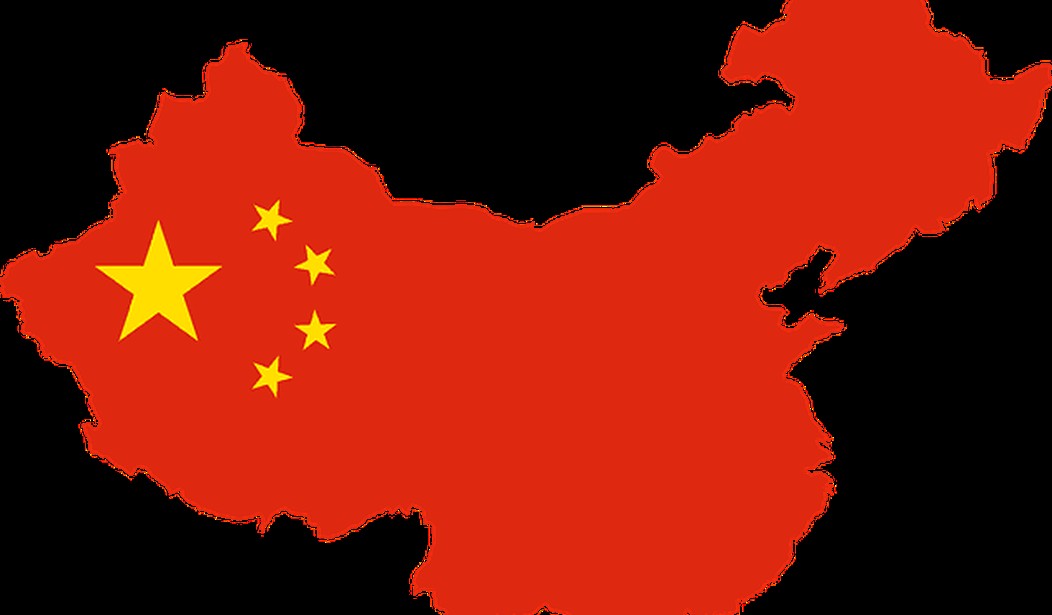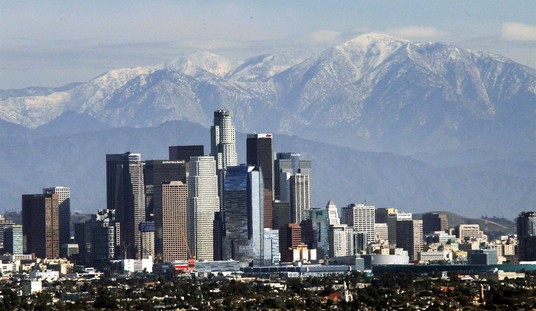China represents an existential threat to the national security of the US in terms of growth of military capabilities but more importantly in the economic realm as they pursue their “Made in China 2025” and Belt-Road initiatives.
The purpose of this series is to present the contents of one of those reports in “bite-sized chunks” that are more easily digestible in order to convey a better understanding of the Chinese economy and its long-term challenges to the US and the world. Part I introduced and summarized the Congressional Research Service report, “China’s Economic Rise: History, Trends, Challenges, and Implications for the United States,” which forms the basis for this series. So far, we have covered the report’s summary, a history of China’s economic development since 1979, the two main factors contributing to their development over the years, measuring the size of China’s economy, China’s role as the world’s largest manufacturer, changes in China’s wage and labor cost advantages, foreign direct investment in China and the factors driving the outflow of foreign direct investment from China, and China’s merchandise trade patterns, including major trading partners and major Chinese trading commodities. Parts I, II, III, IV, V, and VI can be found here, here, here, here, here, and here.
This part covers the first part of the major long-term challenges facing the Chinese economy.
China is currently undergoing a major restructuring of its economic model. Policies that were employed in the past to essentially produce rapid economic growth at any cost were very successful. However, such policies have entailed a number of costs (such as heavy pollution, widening income inequality, overcapacity in many industries, an inefficient financial system, rising corporate debt, and numerous imbalances in the economy) and therefore the old growth model is viewed by many economists as no longer sustainable.
China has sought to develop a new growth model (“the new normal”) that promotes more sustainable (and less costly) economic growth that puts greater emphasis on private consumption and innovation as the new drivers of the Chinese economy. Implementing a new growth model that sustains healthy economic growth could prove challenging unless China is able to effectively implement new economic reforms. Many analysts warn that without such reforms, China could face a period of stagnant economic growth and living standards, a condition referred to by economists as the “middle-income trap”.
Despite China’s three-decade history of widespread economic reforms, Chinese officials contend that China is a “socialist-market economy.” This appears to indicate that the government accepts and allows the use of free market forces in a number of areas to help grow the economy, but the government still plays a major role in the country’s economic development.
Industrial Policies and SOEs. According to the World Bank, “China has become one of the world’s most active users of industrial policies and administrations.” China’s State Council has said that there are currently 150,000 SOEs at the central and local government level. China’s SOEs may account for up of 50% of non-agriculture GDP. In addition, although the number of SOEs has declined sharply, they continue to dominate a number of sectors (such as petroleum and mining, telecommunications, utilities, transportation, and various industrial sectors); are shielded from competition; are the main sectors encouraged to invest overseas; and dominate the listings on China’s stock indexes.
One study found that SOEs constituted 50% of the 500 largest manufacturing companies in China and 61% of the top 500 service sector enterprises. Not only are SOEs dominant players in China’s economy, many are quite large by global standards.
Fortune’s 2016 list of the world’s 500 largest companies includes 103 Chinese firms (compared to 29 listed firms in 2007). 50 Of the 103 Chinese firms listed, Fortune identified 75 companies (73% of total) where the government owned 50% or more of the company. Together, these 75 firms in 2016 generated $7.2 trillion in revenues, had assets valued at $20.7 trillion, and employed 16.2 million workers. Of the 28 other Chinese firms on the Fortune 500 list, several appear to have financial links to the Chinese government.
China and Global Steel Overcapacity. China has become a major global producer of steel. From 2001 to 2016, China’s production of raw steel rose from 152 million metric tons to 805 million metric tons, an increase of 459.9%. During this period, China’s share of global production rose from 17.9% to 50.3% and China accounted for 87.1% of the increase in global steel production.
While much of China’s increased steel capacity has been in response to domestic demand (resulting from China’s large-scale fixed investment), it is also a major exporter. In 2015, China was the second-largest exporter of semi-finished and steel products (after the EU) at 111.6 million metric tons, or 24.1% of global total. Concerns have been raised over the past few years over the effects of increased global steel production despite falling global steel demand.
Following an EU Symposium on Excess Capacity and Structural Adjustment in the Steel Sector in April 2016, then-U.S. Secretary of Commerce Penny Pritzker and then-USTR Michael Froman issued a joint statement that said that the “U.S. steel industry is in a crisis driven in large part by global excess capacity led by unsustainable expansion in steelmaking capacity by China,” and noted that global steel overcapacity had impacted the U.S. industry through price declines, decreased profitability, and over 13,000 jobs lost.
Many analysts contend that China’s steel industry is heavily supported by government entities at the central and local government level through low-cost credit and subsidies. These enable many Chinese steel firms to operate, even when they are unprofitable and heavily in debt—these are termed by some as “zombies.”
The government is reluctant to allow such firms to go bankrupt due to concerns over effects layoffs could have on social stability. One study by Renmin University estimated that half of Chinese steel firms were “zombie enterprises.” In April 2016, the USTR released a list of 86 government subsidies from 2011 to 2014 given to Hebei Iron & Steel Company, one of the largest steel companies in China, which was obtained from the company’s annual reports.
In February 2016, the Chinese government announced plans to shut 100 million to 150 million metric tons of crude steel capacity over the next five years and cut 500,000 jobs.
The USTR’s 2016 report on China’s WTO compliance stated that China had committed to “ensure that no central government plans, policies, directives, guidelines, lending or subsidization targets the net expansion of steel capacity,” and to take steps to reduce existing capacity, including “actively and appropriately dispose of ‘zombie enterprises’ through bankruptcies and other means.”
A State-Dominated Banking Sector, Excess Credit, and Growing Debt. China’s banking system is largely dominated by state-owned or state-controlled banks. According to one analyst, the mangers of China’s state banks are drawn from the ranks of the Chinese Communist Party cadre system, which “enables the party and government leaderships to exert influence over bank lending.”
In 2015, the top five largest banks in China in terms of assets were state-owned entities. The percentage share of assets held by state-owned commercial banks (including the five large state-owned banks), the three government policy banks, and joint-stock commercial banks (where government entities are a major stock holder), together accounted for 68.5% of total bank assets in China.
Foreign participation in China’s banking system is relatively small, accounting for 1.6% of total bank assets. SOEs are believed to receive preferential credit treatment by government banks, while private firms must often pay higher interest rates or obtain credit elsewhere.
According to one estimate, SOEs accounted for 85% ($1.4 trillion) of all bank loans in 2009. It is believed that oftentimes SOEs do not repay their loans, which may have saddled the banks with an ever-increasing amount of nonperforming loans. Many analysts contend that one of the biggest weaknesses of the banking system is that it lacks the ability to ration and allocate credit according to market principles, such as risk assessment.
The Chinese central government uses the banking system to boost credit in order to help meet its GDP growth objectives and to, when needed, offset the impact of global economic downturns, such as after the 9/11 terrorist attacks and the global financial crisis. From 2007 to 2016, China’s domestic credit increased in dollar terms by 218% and as a share of GDP, the level rose from 125% to 212%. Refer to this figure, Annual Change in the Stock of China’s Domestic Credit 2001-2016:

As indicated in this figure, Core Debt of Nonfinancial Sectors in 2016 as a Percentage of GDP for Selected Economies, China’s combined household, corporate, and government debt levels as a percentage of GDP as of mid-2016 are comparable to those of the United States and South Korea and lower than those of Japan and the European Union.

However, China’s debt levels (in both dollars and as a percentage of GDP) have risen sharply within a relatively short time, which, some have speculated, could spark an economic crisis in China in the future.
From 2006 year-end to mid-2016, China’s total nonfinancial sector debt as a percentage of GDP increased from 143% to 254% (up 111 percentage points). Much of the rise in that debt came from the corporate sector, which, as a percentage of GDP, rose from 107% in 2006 to 171% in mid-2016 (up 64 percentage points). In dollar terms, China’s corporate debt rose from $3 trillion to $17.8 trillion (up $14.8 trillion) and currently greatly exceeds U.S. corporate debt levels. Refer to this figure, U.S. and Chinese Corporate Debt: 2006-2016:

Several observers have warned that China’s credit growth may be too extensive and could undermine future growth by sharply boosting debt levels, causing overcapacity in many industrials (especially extending credit to firms that are unprofitable to keep them operating), contributing to bubbles (such as in real estate), and reducing productivity by proving preferential treatment to SOEs and other government-supported entities.
Local government debt is viewed as a big problem in China, largely because of the potential impact it could have on the Chinese banking system. During the beginning of the global financial slowdown, many Chinese subnational government entities borrowed extensively to help stimulate local economies, especially by supporting infrastructure projects.
In December 2013, the Chinese National Audit Office reported that from the end of 2010 to mid-year 2013, local government debt had increased by 67% to nearly $3 trillion. The Chinese government reported that local government debt rose to $4.3 trillion as of 2015.
Efforts have been made over the past few years by the central government to restructure local government debt and restrict local government borrowing, with mixed success, according to some press reports, because of pressures on local governments to maintain rapid economic growth.
Many economists blame China’s closed capital account for much of China’s debt problems. The Chinese government has maintained restrictions on capital inflows and outflows for many years, in part to control the exchange of its currency, the renminbi (RMB), against the dollar and other currencies in order to boost exports.
Many argue the Chinese government’s restrictions on capital flows have greatly distorted financial markets in China, preventing the most efficient use of capital, such as over-investment in some sectors (such as real estate) and under-investment in others (such as services).
Continuing pressuring from the Trump Administration is creating significant pressures on the ChiCom-run economy, the financing of which is purposely opaque. Many economists question China’s manufacturing and banking viability over the long haul as noted here:
The Chinese government central planning has led to a lot of mal investments. This is particularly true in the manufacturing sector. Since the money was loaned out by state banks, the banking system is also reeling under the effects of this problem. The government is currently managing these non-performing assets. However, these assets could cause mayhem in the Chinese banking sector. Also, a lot of money has been lent out to developers who have built ghost (uninhabited) towns with it! This money is also unlikely to be recovered. The Chinese banking system could come under a lot of pressure as these NPA’s become certain. The spillover effects of this downturn could be felt in the stock markets as well as across the world.
Read the rest here.
This ends Part VII of the series. The next part finishes the discussion on other major long-term challenges facing the Chinese economy.
The end.














Join the conversation as a VIP Member